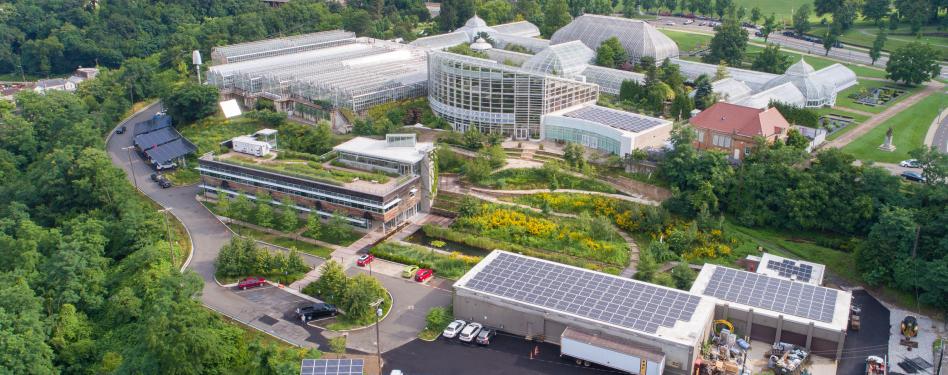
Feature image: The Phipps Center for Sustainable Landscapes. Image credit: Lofty Views.
Sustainable land development provides a critical opportunity for reducing greenhouse gas (GHG) emissions through material choices, landscape design, construction and maintenance practices, and enhancing a project’s ability to store and sequester carbon with soil and vegetation.
The SITES rating system supports the creation of high-performance landscapes and directly addresses decarbonization at every stage of the development process by encouraging strategies that reduce carbon emissions, limit fossil fuel consumption, and protect and create carbon sinks. These strategies include:
- Protecting land and its stored carbon from development and strengthening the ability of landscapes to sequester carbon through restoration efforts;
- Maintaining soil health and protecting and restoring aquatic ecosystems, such as carbon-storing wetlands;
- Planting native vegetation that uses less water and fertilizer and requires less maintenance;
- Managing stormwater using green (vs. gray) infrastructure, which increases biomass on-site and reduces the use of concrete;
- Supporting sites that are walkable, bikeable and near public transit;
- Promoting the use of energy-efficient equipment and lighting, which also promotes clean and renewable energy use;
- Reducing water consumption for irrigation and water features; and
- Selecting materials that are regionally sourced, salvaged, have recycled content, and/or are purchased from manufacturers/suppliers that employ sustainable practices.
As part of this effort to further promote climate-positive design, a SITES pilot credit is available, which supports project teams in assessing and quantifying carbon emissions and carbon sequestration capacity and then making improvements to their project’s impact on carbon.
